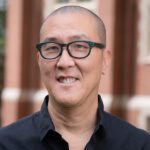Chan is viewed as a school of Buddhism that arose in China. But from a Chan perspective, it’s not a school, a fixed practice, a thing to attain, or even an experience. It’s simply the manifestation of the buddhadharma as laid out in the threefold practice of virtue, meditation, and wisdom. This threefold practice is the essence of Buddhism’s eightfold path. Virtue is associated with right speech, right action, and right livelihood; meditation is associated with right effort, right concentration, and right meditation; and wisdom is associated with right resolve and right view.
The distinctive approach of Chan is to point out that there’s no such thing as a fixed self; we’re already free. It’s only due to our fixation on words and language—and by extension, our discriminations, discursive views, stories, and emotions—that a self comes into being. This “self” is perpetuated by craving, aversion, and delusion, which binds us to suffering.
Chan recognizes that rigid forms of spiritual practice can also become a fixation; thus, the threefold path of virtue, meditation, and wisdom needs to be cultivated amidst everyday life, especially whenever we perceive the “eight winds” of gain and loss; fame and slander; praise and ridicule; and joy and sorrow. Ordinarily, we’re profoundly blown left and right by these polarizing perceptions, and we label them because we know of no other way to experience the world without naming everything.
While words have their utility, most people become trapped by them. In labeling, we gain a sense of control, and labels form the contours of our reality, but in truth we’re controlled by the words we choose. The more fixated we are on these labels, the more trapped we are in that reality. This is delusion; this is suffering.
The key in Chan practice lies in seeing through and dismantling our fixation on words, which inevitably divides, reifies, and brings suffering. Over the centuries Chan has developed two distinct ways to explicitly target our tendency to reify the world through words and language. The first method is contemplating gong’an (koan, in Japanese), which literally means “public case.” The term comes from Tang dynasty (618–907) civil court documents, referring to legal cases. Chan masters drew on this judiciary metaphor to refer to “cases” or stories of everyday life situations that led to awakenings. In the same way magistrates review, scrutinize, and pass judgment on legal cases, Chan masters compiled and commented on the encounters of earlier practitioners. Their comments, like a magistrate’s verdict, evaluated the most important turning point or catalyst of those awakening experiences to give readers pointers to insight, inspiring them to take up these cases as their own objects of contemplative investigation. These compilations became known as gong’an collections.

To many, gong’ans seem like strange puzzles. In truth, there’s nothing to solve. Their utility lies in using poison against poison. Because words and language are like a poison in our minds, contaminating everything we experience, gong’ans introduce a new poison that counteracts the original. They present an impossibility, an impasse, and cause the mind to become stuck. We’re left with a great sense of not knowing, impenetrability, and wonderment, which is the point of this method. Gong’ans give us nothing to hang on to, so all words, concepts, and everything we’ve ever known about ourselves as “this” and “that” falls away. They turn words, language, and concepts on their head, thereby shattering our self-grasping so we awaken to our true nature. Simply put, Chan practitioners use gong’ans to dissolve self-referentiality and fixations. To engage in gong’an practice, then, is to use them as a method to investigate our life and what it means to live in accordance with our freedom.
There are many ways to engage with gong’ans. It’s often not necessary to reflect on the whole story told in a gong’an since each gong’an has a critical turning point that has the potential to transform delusion into awakening. This critical point, called a huatou (wato, in Japanese), can be the focus of one’s meditation. Examples of huatou include, “Who am I?” “What is this?” and “What was my original face before my father and mother were born?”
A huatou is, in many ways, a condensed version of a gong’an. Huatou literally means “that which lies before words.” If words and concepts are the thorny vines that bind and delude us, then huatou is the hatchet that cuts through them and frees us. Again, the key is to generate a sense of wonderment, not knowing. Eventually wonderment will shatter, and one awakens from the dream of delusion.
The second Chan approach to practice is called mozhao or silent illumination, which is somewhat akin to practicing shamatha and vipashyana meditations simultaneously. This method asks us to drop language entirely. One lets any words or thoughts that arise dissipate on their own. When we drop the labels, the mind regains its natural luminosity. There will come a point when the mind itself suddenly vanishes, and along with it, the self. This is awakening.
Extending this practice to daily life, we practice engaging with the world without being so tethered to words and concepts. Whether sitting, walking, working, or interacting with others, there is just wakeful, clear experiencing of the freshness and immediacy of each moment. The practitioner is present to what is, and responds to what needs to be done, what can be done—without injecting a self where there is none.

Both silent illumination and the gong’an are methods, which rely on the conviction that awakening is already here, in this moment—it’s not something produced through contrived practice. Yet, practice is absolutely necessary because we’re conditioned by our fixations, always “selfing” and othering, being pushed and pulled by the eight winds.
To practice virtue, from the Chan perspective, is to be free from the eight winds. To practice meditation is to be free from distractions amidst daily life. To practice wisdom is not to obstruct the nature of the mind, which is already without self.
Bringing the threefold practice of virtue, meditation, and wisdom into our lives is also about forming new relationships and seeing new beginnings. This is compassion in action. When we encounter difficulties in life, there’s no need to fixate on our impulse to label them as negative. What appears to be negative may turn out to be a learning experience. When life presents us with challenges—whether from our boss, colleagues, family members, friends, teachers, or students—if we can adapt to situations and recognize that each moment is a new beginning, we won’t hold grudges or feel resentment. Solutions to our challenges always appear when we stop labeling them, when we stop trapping ourselves in a fixed reality.
Dismantling our deep habit of reifying experiences through words and language is as easy as letting go right now or as hard as a lifetime of practice. In the process, we become more spacious, connected, and receptive to the wonders of life. We become more aligned to our true nature, which is already free.

